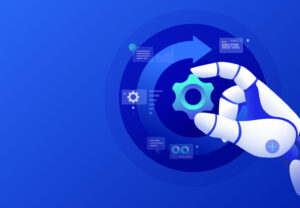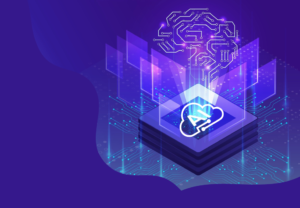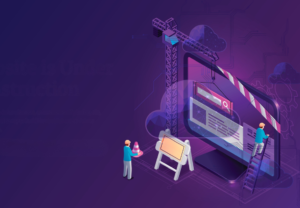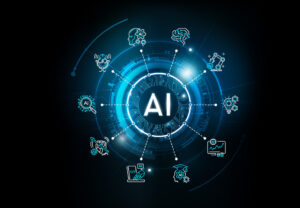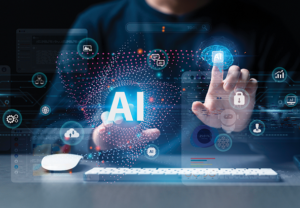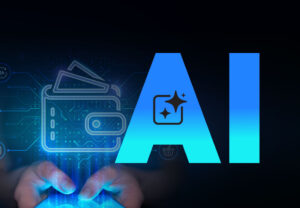Developing Intelligent Chatbots with Generative AI Capabilities
“Intelligent chatbot development is advancing through generative AI applications, integrating NLP chatbot solutions and conversational AI tools. This progression enhances chatbot user experience, enabling AI-driven chatbot design and chatbot automation AI. Businesses are leveraging these innovations for efficient chatbot AI integration, transforming AI conversational agents into dynamic, responsive systems.”
The integration of generative artificial intelligence with conversational agents represents a significant advancement in organisational interactions, information processing, and operational efficiency. Generative AI chatbots surpass traditional rule-based systems, offering enhanced capabilities in natural language understanding, contextual awareness, and human-like interactions. These advanced chatbot systems can comprehend nuanced queries, learn from interactions, and generate coherent, contextually appropriate responses that closely mimic human communication patterns.
For enterprises in today’s digital-first environment, deploying AI conversational agents provides substantial competitive advantages through improved customer experiences, operational efficiencies, and advanced data processing capabilities. These systems are more than mere customer service tools; they function as comprehensive business assets capable of handling complex document analysis, facilitating multilingual communication, and automating knowledge-intensive processes previously requiring significant human intervention. Recent industry analyses indicate that organisations implementing generative AI-powered chatbots report average operational cost reductions of 30-40% in customer service operations, alongside marked improvements in customer satisfaction metrics. [8]
The technical capabilities underpinning these systems have expanded dramatically with the advent of transformer-based architectures and foundation models that can process and generate human language with remarkable fluency. This technical blog examines the architectural components, implementation strategies, and operational considerations that technical leaders should evaluate when developing and deploying generative AI chatbots across enterprise environments.
The Evolution of Chatbots
- From Rule-Based to AI-Driven Chatbots
The development of conversational interfaces has evolved significantly since the introduction of ELIZA in the 1960s. Early chatbots relied heavily on deterministic rule-based architectures, using pattern-matching algorithms and decision trees to navigate predefined conversational pathways. These systems operated within closed-domain environments with explicitly programmed interaction parameters, resulting in brittle conversational experiences that struggled with novel inputs or contextual variations. The limitations of these early implementations were evident in their inability to maintain contextual continuity across multi-turn conversations and their restricted capacity to interpret semantic variations in user queries.
The shift to statistical approaches in the early 2000s marked a significant architectural change, with the introduction of machine learning classifiers for intent recognition and entity extraction. These systems employed supervised learning methodologies trained on annotated conversational datasets, enabling more robust recognition of user intentions across linguistic variations. However, response generation remained largely template-based, limiting conversational fluidity and adaptability. The subsequent integration of deep learning methodologies, particularly recurrent neural networks (RNNs) and long short-term memory (LSTM) architectures, further enhanced these systems’ ability to model sequential data and maintain conversational context across extended dialogues. This progression established the foundation for today’s sophisticated AI-driven chatbot solutions.
Contemporary chatbot architectures represent a substantial technical advancement, leveraging transformer-based models with attention mechanisms capable of processing and generating human language with remarkable fluency. These systems employ transfer learning methodologies, where pre-trained language models are fine-tuned on domain-specific datasets, dramatically reducing the volume of training data required while enhancing domain expertise. This evolution has transformed chatbots from limited, rule-constrained systems to dynamic conversational agents capable of operating across open domains with contextual awareness and linguistic sophistication previously unattainable in computational systems.
- Generative AI: The Next Frontier
Generative AI represents a significant technical advancement from traditional chatbot architectures, introducing probabilistic language generation capabilities that surpass template-based approaches. At its core, generative AI employs autoregressive language models trained on extensive text corpora using self-supervised learning objectives. This enables systems to predict subsequent tokens based on preceding context, facilitating the production of coherent, contextually appropriate text without explicit programming of response patterns. Architectural innovations such as attention mechanisms allow models to process input sequences holistically rather than sequentially, capturing long-range dependencies and semantic relationships essential for maintaining conversational coherence.
The practical implications of these advancements are substantial. Generative AI chatbots can formulate responses to previously unseen queries, adapt dynamically to conversational context, and generate semantically diverse outputs conditioned on specific interaction parameters. This capability significantly expands the functional scope of conversational agents, enabling engagement in open-domain discussions, synthesising information from multiple sources, and generating detailed technical content such as code snippets or analytical reports. For enterprise deployments, these systems can maintain consistent brand voice while personalising interactions based on user profiles, interaction history, and contextual factors.
Recent innovations have further enhanced these capabilities through retrieval-augmented generation (RAG) architectures, which combine generative models with information retrieval systems to enable factually accurate responses grounded in authoritative knowledge sources. Additionally, the integration of reinforcement learning from human feedback (RLHF) has improved alignment with human preferences and organisational requirements, addressing critical challenges related to output quality, factuality, and appropriateness. These technical capabilities position generative AI as the next frontier in intelligent chatbot development, enabling enterprise-grade conversational agents that deliver substantive business value across customer engagement, knowledge management, and operational automation domains.
Core Technologies Behind Generative AI Chatbots
- Natural Language Processing (NLP)
The foundation of modern generative AI chatbots relies heavily on advanced Natural Language Processing (NLP) frameworks. These frameworks enable computational systems to interpret, understand, and generate human language with remarkable accuracy. Contemporary NLP architectures employ transformer-based models that utilise self-attention mechanisms to process linguistic input holistically rather than sequentially. This approach captures complex interdependencies between tokens, regardless of their positional distance, representing a significant enhancement over earlier recurrent neural network (RNN) approaches, which struggled with long-range dependencies due to vanishing gradient problems. Modern NLP chatbot solutions leverage these architectures to perform sophisticated linguistic tasks, including contextual intent recognition, named entity extraction, sentiment analysis, and coreference resolution—all critical for maintaining coherent conversational threads.
At the preprocessing layer, these systems implement tokenisation strategies that segment input text into manageable units. Subword tokenisation methods such as Byte-Pair Encoding (BPE) or SentencePiece are often employed to efficiently handle out-of-vocabulary terms and morphological variations. This approach allows chatbots to process neologisms, technical terminology, and multilingual inputs without requiring explicit vocabulary extensions. For enterprise deployments, these preprocessing modules are frequently augmented with domain-specific entity recognition components trained to identify industry-specific terminology, product names, technical specifications, and other contextually significant information within user queries.
The semantic understanding capabilities of advanced NLP systems are further enhanced through contextual embedding techniques that generate dense vector representations capturing both syntactic structure and semantic meaning. These representations serve as the computational substrate for downstream tasks, including intent classification, where machine learning classifiers determine user objectives with probability distributions across potential intent categories. For conversational AI tools deployed in enterprise environments, these NLP components are typically fine-tuned on domain-specific datasets to enhance performance within business contexts, enabling accurate recognition of industry terminology and domain-specific user intentions.
- Machine Learning (ML) and Deep Learning (DL)
The operational intelligence of generative AI chatbots stems from sophisticated machine learning and deep learning architectures that enable both predictive and generative capabilities within conversational systems. These implementations typically employ ensemble approaches, combining multiple specialised models optimised for specific conversational tasks. Supervised learning methodologies are used during development to train intent recognition classifiers, entity extractors, and state tracking components on annotated conversational datasets. These components utilise gradient-based optimisation techniques with architectures such as convolutional neural networks (CNNs) for pattern recognition in linguistic features and bidirectional encoders for contextual processing of sequential inputs.
Deep learning frameworks provide the computational infrastructure for extracting hierarchical feature representations from raw textual input, with multiple processing layers transforming low-level lexical features into increasingly abstract semantic representations. For enterprise-grade chatbot AI integration, these systems frequently implement transfer learning methodologies, where models pre-trained on general language corpora are fine-tuned on domain-specific datasets. This approach significantly reduces the volume of training data required for deployment while enhancing performance within specific business contexts. Additionally, contemporary implementations leverage contrastive learning techniques to improve semantic discrimination between similar but distinct user intents, enhancing the precision of conversational routing.
The runtime behaviour of ML/DL-powered chatbots is further enhanced through reinforcement learning methodologies that optimise conversational policies based on reward signals derived from user satisfaction metrics, task completion rates, and other key performance indicators. These systems implement exploration-exploitation strategies to balance leveraging established conversational patterns and testing alternative dialogue approaches to potentially discover more effective interaction strategies. For enterprise deployments, these technical capabilities are frequently augmented with active learning pipelines that identify low-confidence interactions for human review, creating feedback loops that continuously enhance model performance through targeted improvement of identified weaknesses.
- Generative Models (GPT-3, GPT-4)
The capabilities of contemporary AI conversational agents are largely attributable to the implementation of large-scale generative language models that redefine the technical approach to response generation. These models, exemplified by architectures like GPT-4, PaLM, Claude, and Llama 2, utilise deep transformer networks comprising billions of parameters trained on diverse text corpora spanning hundreds of terabytes. The technical distinction of these models lies in their autoregressive architecture, which enables them to generate coherent textual continuations by iteratively predicting subsequent tokens based on preceding context. This generative paradigm represents a significant departure from earlier retrieval-based or template-driven approaches, offering unprecedented flexibility in conversational response formulation.
The architectural sophistication of these generative models includes multi-head attention mechanisms that simultaneously consider different representational subspaces of input sequences, enabling the models to capture complex linguistic patterns across multiple abstraction levels. The practical implication of this capability is reflected in the models’ ability to maintain coherent conversational context across extended dialogue sessions, reference previously mentioned information appropriately, and adapt stylistic elements based on user interaction patterns. For enterprise implementations, these generative capabilities are typically deployed within constrained operational parameters to ensure output alignment with business requirements, brand voice guidelines, and factual accuracy standards.
Recent advancements in this domain include the development of retrieval-augmented generation (RAG) architectures that integrate generative models with external knowledge bases, enabling factually grounded responses that combine the linguistic fluency of generative models with the factual precision of retrieval systems. Additionally, the implementation of reinforcement learning from human feedback (RLHF) has enhanced these models’ alignment with human preferences and organisational requirements. These innovations address critical challenges related to hallucination (generation of plausible but factually incorrect information), enabling enterprise deployments to leverage generative capabilities while maintaining rigorous standards for factual accuracy and operational reliability in customer-facing applications.

Key Functionalities of Generative AI Chatbots
- Unstructured Document Processing
Generative AI chatbots possess advanced capabilities for processing unstructured documents, transforming raw textual content into structured, actionable information. Modern document processing pipelines employ multi-stage architectures that combine optical character recognition (OCR) for text extraction, layout understanding models for spatial relationship analysis, and deep learning classifiers for semantic segmentation of document elements. These components work together to convert visual documents into machine-readable formats while preserving critical structural information. For legal and contractual documents, specialised entity recognition models are trained to identify clauses, parties, obligations, termination conditions, and other legally significant elements with high precision.
In enterprise environments, these capabilities translate into substantial operational efficiencies. For example, a mid-sized law firm implemented generative AI for contract analysis, utilising a fine-tuned language model with domain-specific training on legal documents. This enabled automated extraction of key contractual provisions, identification of non-standard clauses, and generation of comprehensive contract summaries. The system incorporated a retrieval component indexing the firm’s contract database, allowing identification of precedents and potential inconsistencies across the document corpus. Performance metrics indicated 85% accuracy in identifying non-standard clauses and a 70% reduction in time allocated to initial contract review processes, with notable efficiency gains in standardised agreement processing. [4]
Generative AI document processing extends to financial statement analysis, technical documentation parsing, and regulatory compliance verification. These implementations typically employ domain-constrained generative models fine-tuned on specific document types, with attention mechanisms optimised to identify relationships between textual elements across multi-page documents. Integrating these capabilities with enterprise knowledge management systems creates intelligent information workflows that extract insights from document repositories, generate executive summaries of complex technical content, and identify connections between seemingly disparate information sources. For organisations managing substantial document volumes, these technologies enable information retrieval and analysis at scales previously unattainable through manual processing methods.
- Voice Controls
Integrating voice control capabilities within generative AI chatbots represents a significant advancement in multimodal interaction design, extending conversational interfaces beyond text-based channels. Modern voice-enabled systems employ sophisticated speech processing pipelines comprising automatic speech recognition (ASR) components for converting acoustic signals to text, natural language understanding (NLU) modules for semantic interpretation, and text-to-speech (TTS) synthesisers for generating natural-sounding vocal responses. These components leverage deep learning architectures, including convolutional neural networks for feature extraction from audio spectrograms and sequence-to-sequence models for mapping between acoustic and linguistic representations. For enterprise deployments, these systems frequently implement speaker diarisation capabilities to distinguish between multiple participants in conference scenarios.
The practical impact of these capabilities is exemplified by HelloFresh’s implementation of voice-activated customer service systems. The deployment utilised a generative AI framework with specialised acoustic models trained on food-related terminology and brand-specific vocabulary, enabling accurate recognition of product names, dietary specifications, and cooking instructions. The technical architecture incorporated contextual bias strategies that dynamically adjusted recognition parameters based on conversation context, substantially improving accuracy for domain-specific terminology. The system’s natural language generation component was optimised for conversational prosody, implementing attention mechanisms that modulated speech patterns for emphasis and clarification. Performance metrics indicated a 40% increase in first-contact resolution rates and a 25% reduction in average handling time for customer inquiries, with particularly strong performance improvements for complex order modifications and dietary accommodation requests. [5]
Voice control capabilities enable hands-free operation in environments where physical interaction is impractical or unsafe, including manufacturing facilities, healthcare settings, and field service operations. These implementations typically employ noise-robust acoustic models trained on environmentally diverse audio samples, with adaptive filtering techniques to isolate speech from background noise. Integrating these capabilities with enterprise systems enables voice-driven business process execution, hands-free documentation, and accessibility accommodations for vision-impaired users. As these technologies mature, further convergence between voice interfaces and ambient computing paradigms is anticipated, creating pervasive conversational layers atop enterprise digital infrastructure.
- Meeting Transcription and Summarisation
Generative AI chatbots offer significant advancements in meeting transcription and summarisation, enhancing enterprise knowledge capture and dissemination. Modern transcription systems employ cascaded architectural approaches, combining acoustic models for speech recognition with language models for contextual correction and speaker diarisation components for attributing statements to specific participants. These systems leverage transformer-based architectures to process long-form audio content, with attention mechanisms capturing dependencies across extended temporal ranges. The precision of these components has reached near-human accuracy levels for clearly recorded speech in standard dialects, with continuous improvements for accented speech and challenging acoustic environments through adversarial training techniques and domain adaptation methodologies.
The implementation of these capabilities at Concentrix demonstrates their practical impact in enterprise environments. The deployment utilised a generative AI framework with domain-specific training on industry terminology and company-specific vocabulary, enabling accurate transcription of technical discussions and identification of action items within meeting contexts. The architecture incorporated a two-stage summarisation pipeline: an extractive component identifying salient discussion points and a generative component synthesising these elements into coherent, concise summaries structured by topic relevance. The system implemented hierarchical summarisation capabilities, generating executive summaries for leadership review while maintaining detailed technical notes for implementation teams. Performance metrics indicated an 80% reduction in time required for meeting documentation and a 65% improvement in action item completion rates attributed to clearer assignment documentation and automated follow-up prompts. [6]
The technical sophistication of these systems extends to semantic understanding of meeting content, enabling identification of decisions, commitments, risks, and dependencies without explicit flagging during discussions. These capabilities are particularly valuable for distributed teams operating across time zones, creating persistent knowledge repositories that capture not only what was said but the contextual significance of discussion points within broader project frameworks. For organisations implementing formal governance structures, these systems can automatically categorise discussion elements according to predefined taxonomies, routing information to appropriate documentation repositories and flagging items requiring escalation or formal approval processes.
- Translations
Generative AI chatbots represent a significant advancement in cross-lingual communication, enabling seamless interaction across language boundaries without specialised linguistic expertise. Contemporary machine translation architectures implement encoder-decoder frameworks with cross-attention mechanisms that align semantic representations across language pairs, capturing nuanced linguistic relationships beyond word-level correspondences. These models leverage massive parallel corpora comprising billions of sentence pairs across diverse languages, enabling them to learn complex translation patterns through statistical co-occurrence analysis. For enterprise deployments, these general translation capabilities are frequently augmented with domain-specific terminology databases and custom translation memories to ensure consistent handling of industry-specific vocabulary and brand terminology.
The implementation of these capabilities at Best Buy illustrates their practical impact on multinational customer support operations. The deployment utilised a generative AI translation framework with domain-specific fine-tuning on retail and technical support terminology, enabling real-time translation of customer inquiries across 12 languages with particular emphasis on technical product specifications and troubleshooting procedures. The architecture incorporated a quality estimation component that identified low-confidence translations for human review, creating a continuous improvement feedback loop for translation quality. The system maintained consistent brand voice across language variants while adapting to cultural communication preferences, implementing distinct conversational patterns optimised for each target language. Performance metrics indicated a 45% expansion in self-service resolution rates for non-English speaking customers and a 30% reduction in average resolution time for multilingual support cases. [7]
Translation capabilities enable cross-functional collaboration in multinational organisations, facilitate expansion into international markets, and enhance compliance with local language requirements in regulated industries. These implementations typically employ specialised models fine-tuned for specific language pairs and content domains, optimising performance for particular use cases such as financial document translation, technical documentation localisation, or marketing content adaptation. Integrating these capabilities with enterprise content management systems creates intelligent multilingual knowledge bases that maintain synchronisation across language variants, ensuring consistent information access regardless of user language preferences and reducing maintenance overhead for multilingual content repositories.
Implementation Strategies
- Defining Objectives and Use Cases
Strategic implementation of generative AI chatbots begins with a rigorous definition of business objectives and prioritisation of use cases aligned with organisational value drivers. This process necessitates cross-functional collaboration between technical teams and business stakeholders to identify operational friction points, customer experience deficiencies, and knowledge management challenges suitable for conversational AI solutions. Effective implementations employ structured assessment methodologies, including service blueprint analysis to map customer journeys, transaction volume analysis to quantify interaction frequencies, and complexity/value matrices to prioritise automation candidates. These analytical approaches enable organisations to target high-impact opportunities where generative AI capabilities can deliver substantive business outcomes rather than implementing technology without clear strategic alignment.
For enterprise environments, primary use case categories typically include customer service automation (handling routine inquiries, troubleshooting, and service requests), internal knowledge management (providing employee access to organisational information assets), process guidance (offering step-by-step instruction for complex procedures), and specialised domain applications (such as financial advisory, healthcare triage, or technical support). Each application domain requires specific consideration of interaction complexity, information sensitivity, and integration requirements. Additionally, organisations must establish clear success criteria for each deployment, defining both technical performance metrics (such as intent recognition accuracy and response relevance) and business impact measures (including cost reduction, customer satisfaction improvements, and operational efficiency gains).
Implementation planning must further account for deployment modality considerations, determining whether conversational agents will operate as standalone interfaces or integrate within existing digital channels, including websites, mobile applications, telephony systems, or collaboration platforms. For enterprise applications with substantial existing digital infrastructure, integration-first approaches typically deliver higher adoption rates by embedding conversational capabilities within established user workflows rather than requiring adoption of new interaction channels. This strategic consideration extends to authentication and authorisation frameworks, ensuring that conversational systems appropriately manage access to sensitive information based on user identity and permissions while maintaining conversational continuity across authentication boundaries.
- Choosing the Right Technological Stack
The technical architecture supporting generative AI chatbots comprises multiple interconnected components requiring careful selection and configuration to ensure operational reliability, performance efficiency, and development agility. Core technology decisions include the selection of foundation models (considering parameters such as model size, training data diversity, fine-tuning capabilities, and inference latency), development frameworks (evaluating options including Dialogflow, Microsoft Bot Framework, Rasa, and custom implementations), and deployment infrastructure (assessing cloud-based, on-premises, and hybrid hosting models). These decisions must balance competing requirements, including performance objectives, security constraints, scalability needs, and development resource capabilities.
For enterprises with strict data governance requirements or operational constraints, architectural considerations extend to data residency, network isolation, and computational resource allocation. Organisations in regulated industries frequently implement hybrid architectures where sensitive components operate within controlled environments while leveraging cloud resources for non-sensitive processing tasks. Additionally, deployment strategies must account for scaling patterns to accommodate variable interaction volumes and burst capacity requirements during peak periods. Sophisticated implementations leverage containerisation technologies with auto-scaling capabilities to dynamically adjust computational resources based on demand patterns, optimising both performance and operational cost efficiency.
Integration capabilities represent another critical evaluation dimension, with particular emphasis on API extensibility, event streaming support, and enterprise system connectors. Effective chatbot implementations rarely operate in isolation; they require seamless interaction with customer relationship management systems, knowledge bases, transaction processing platforms, and authentication services. Technical architectures must therefore implement robust integration patterns, including synchronous API interactions for real-time data exchange, asynchronous event streams for state propagation, and batch processing interfaces for historical data analysis. These integration capabilities enable conversational agents to access contextual information, execute transactional operations, and maintain synchronisation with enterprise data repositories—all essential requirements for delivering substantive business value through AI-driven chatbot design.
- Training and Continuous Learning
The development lifecycle for generative AI chatbots necessitates structured approaches to model training, validation, and continuous improvement. Initial training methodologies typically employ transfer learning techniques, adapting pre-trained foundation models to specific domains through fine-tuning on curated datasets representative of target use cases. This approach substantially reduces computational requirements compared to training models from scratch while enabling domain specialisation. For enterprise deployments, training datasets frequently combine publicly available conversational corpora with organisation-specific content, including support documentation, product specifications, and anonymised interaction logs. Additionally, synthetic data generation techniques may augment training datasets, creating artificial examples that improve model robustness across edge cases and uncommon interaction patterns.
Validation methodologies must extend beyond simple accuracy metrics to encompass comprehensive evaluation frameworks assessing multiple performance dimensions, including factual correctness, response relevance, conversation coherence, and alignment with brand voice guidelines. Sophisticated validation approaches implement human-in-the-loop evaluation protocols where subject matter experts review model outputs across representative interaction scenarios, providing qualitative assessments to complement quantitative performance metrics. For sensitive applications, validation extends to adversarial testing methodologies that systematically probe system boundaries to identify potential failure modes, including inappropriate responses, hallucination risks, and prompt injection vulnerabilities. These comprehensive validation approaches ensure that deployed systems meet both technical performance requirements and business suitability standards.
Post-deployment operational excellence requires the implementation of continuous learning pipelines that leverage interaction data to identify improvement opportunities. These systems typically employ passive monitoring approaches that flag low-confidence responses, unexpected conversation paths, and failed user intents for review by conversation designers and domain experts. Additionally, active learning methodologies may systematically identify edge cases requiring additional training data, prioritising annotation efforts toward areas with the highest potential impact. For enterprise deployments, these continuous improvement workflows are frequently integrated with change management processes, ensuring that model updates undergo appropriate review and approval before deployment to production environments. This structured approach to continuous learning enables conversational systems to adapt to evolving user needs, language patterns, and business requirements while maintaining operational stability.

Challenges and Solutions
- Data Privacy and Security
Ensuring data privacy and security is paramount in generative AI chatbot development. Implement robust encryption protocols, access controls, and compliance with regulations such as GDPR to protect sensitive information.
- Bias and Fairness
Addressing bias and fairness in AI conversational agents involves using diverse training datasets and implementing bias detection algorithms. Regular audits and updates are essential to maintain equitable and unbiased interactions.
- Integrating with Existing Systems
Effective chatbot AI integration requires seamless connectivity with existing enterprise systems. Utilise APIs, middleware, and custom connectors to ensure smooth data exchange and operational coherence across platforms.
Future Trends and Opportunities
- Advancements in Generative AI
Generative AI chatbots are poised to benefit from ongoing advancements in model architectures, including more efficient transformer models and enhanced training techniques. These improvements will lead to more accurate, context-aware, and responsive AI conversational agents, significantly enhancing the chatbot user experience. Innovations such as retrieval-augmented generation (RAG) and reinforcement learning from human feedback (RLHF) are expected to further refine the capabilities of generative AI applications. These advancements will enable chatbots to provide more reliable and factually accurate responses, reducing the risk of generating incorrect information. Additionally, the integration of multimodal AI, combining text, voice, and visual inputs, will create more immersive and interactive user experiences. As these technologies evolve, they will drive substantial improvements in NLP chatbot solutions, making AI-driven chatbot design more robust and versatile. Enterprises will be able to leverage these advancements to develop intelligent chatbot development strategies that cater to complex business needs, ensuring seamless and efficient interactions across various platforms.
- Expanding Use Cases
The applications of generative AI chatbots are expanding across various sectors, offering new opportunities for AI conversational agents. In healthcare, AI-driven chatbot design is being used for patient triage, appointment scheduling, and providing medical information, enhancing patient care and operational efficiency. In finance, generative AI applications are facilitating customer support, fraud detection, and personalised financial advice, improving service delivery and security. Education is another sector benefiting from NLP chatbot solutions, with chatbots providing tutoring, administrative support, and personalised learning experiences. Customer service remains a key area for chatbot automation AI, with conversational AI tools handling inquiries, troubleshooting, and service requests, leading to improved customer satisfaction and reduced operational costs. As generative AI chatbots continue to evolve, their integration into diverse business processes will drive significant operational efficiencies and innovation. Organisations will be able to harness these technologies to streamline workflows, enhance user engagement, and achieve strategic objectives, making AI conversational agents an indispensable part of modern enterprise solutions.
Conclusion
The development and deployment of generative AI chatbots represent a significant technological advancement with profound implications for enterprise operations across various functional domains. The technical advancements examined, including sophisticated natural language processing architectures, generative foundation models, and multimodal interaction capabilities, have fundamentally redefined the scope and effectiveness of conversational agents in business contexts. These systems have evolved from simple query-response mechanisms to intelligent business assets capable of understanding contextual nuances, generating human-like responses, and executing complex operational tasks with minimal human intervention. For technical leaders navigating digital transformation initiatives, these capabilities offer unparalleled opportunities to enhance customer experiences, streamline operational processes, and unlock value from organisational knowledge assets.
The implementation considerations outlined—spanning architectural selection, integration strategies, data privacy frameworks, and bias mitigation approaches—provide a comprehensive roadmap for organisations deploying these technologies in production environments. Successful implementations require balanced consideration of technical capabilities, operational requirements, and governance frameworks to ensure that conversational systems deliver sustainable business value while maintaining alignment with organisational values and regulatory obligations. As these technologies continue to evolve, further convergence between conversational interfaces and enterprise systems is anticipated, creating unified digital experiences that seamlessly blend human and automated interactions across customer and employee touchpoints.
Motherson Technology Services brings expertise to this domain through its comprehensive generative AI implementation methodology, combining technical excellence with domain-specific optimisation. Our approach integrates foundation model selection, custom fine-tuning, enterprise system integration, and continuous improvement frameworks to deliver conversational systems optimised for specific business requirements. By leveraging these capabilities, organisations can accelerate their AI transformation journeys while minimising implementation risks and maximising return on investment.
References
[1] https://oyelabs.com/ultimate-guide-to-ai-chatbot-development/
[2] https://botpenguin.com/blogs/generative-ai-development-in-building-dynamic-chatbots
[3] https://educationaltechnologyjournal.springeropen.com/articles/10.1186/s41239-025-00508-2
[4] https://www.paradiso.ai/blog/how-ai-is-helping-people-get-more-done-15-real-life-examples/
[5] https://www.marketingscoop.com/ai/top-chatbot-success/#content
[6] https://www.concentrix.com/insights/case-studies/generative-ai-chatbot/
[7] https://cloud.google.com/transform/101-real-world-generative-ai-use-cases-from-industry-leaders
About the Author:

Arvind Kumar Mishra, Associate Vice President & Head, Digital and Analytics, Motherson Technology Services. A strong leader and technology expert, he has nearly 2 decades of experience in the technology industry with specialties in data-driven digital transformation, algorithms, Design and Architecture, and BI and analytics. Over these years, he has worked closely with global clients in their digital and data/analytics transformation journeys across multiple industries.

 May 29, 2025
May 29, 2025 Arvind Kumar Mishra
Arvind Kumar Mishra





